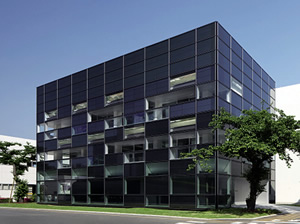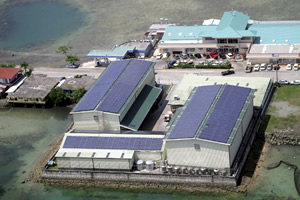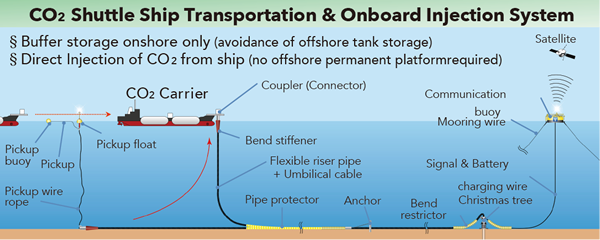Feature
Contribution of Japanese Technologies to Global Warming Countermeasure and Its Commitment to Their Diffusion
Responding to prevent global warming requires implementation of GHG emission reduction measures not only within Japan but also on a global scale, and contributing to the promotion of such measures in developing country is essential. Close involvement is extremely important in disseminating leading low-carbon technologies in the world through the promotion of initiatives such as the Joint Crediting Mechanism (JCM). The following section addresses contributions for these disseminations.

The First Net Zero Energy Building (ZEB) in Japan

Photovoltaic power generation in Palau
Development and Demonstration of New Technologies to Reduce CO2 Emission
Japan submitted a new emission reduction target, a 26% reduction of greenhouse gas by 2030. To achieve this target, it is essential to develop and attain early implementation of technologies that will enable further carbon dioxide reduction. Therefore, the Ministry of the Environment of Japan (MOEJ) has been promoting RD&D (Research Development and Demonstration) projects for new technologies to reduce CO2 emissions, including the first zero energy building (ZEB) which achieves net-zero energy consumption, a solar powered hydrogen station, and a highly-efficient, low-cost, and compact hydroelectric power generator using unused energy contained in water flowing through the pipes in the water supply system.
Joint Crediting Mechanism (JCM)
The JCM is appropriately evaluates contributions from Japan to GHG emission reductions or removals in a quantitative manner achieved through the diffusion of low carbon technologies, products, systems, services, and infrastructure as well as implementation of mitigation actions in developing countries, and to use them to achieve Japan's emission reduction target. Fifteen countries are currently participating in this mechanism. Accumulated emission reductions or removals by FY 2030 through JCM programs are estimated to be ranging from 50 to 100 million t-CO2. With the aim to support the implementation of JCM projects, MOEJ has been implementing JCM Financing programs such as JCM Model Projects and Asian Development Bank Trust Fund, in which selected to a total of 43.
Next-generation Material "Cellulose Nanofiber"
Plant-derived cellulose nanofibers (CNF). The MOEJ is committed to the use of this next-generation material which has the potential to be a core technology in many products in the field of greenhouse effect measures. CNF is a nano-sized scale fiber isolated from trees and other plants. It is light in weight but has a high material-strength, and less prone to heat deformation. If automobile plastic parts are reinforced with CNFs, better fuel efficiency from lighter weight is expected to decrease vehicle CO2 emissions. It will also lead to an efficient use of rich domestic forest resources, with a potential to build a low-carbon, material circulation society.
Environmentally Friendly Carbon Dioxide Capture and Storage (CCS)
The Fifth Assessment Report by the Intergovernmental Panel on Climate Change (IPCC) suggests that suppressing temperature increase after the industrial revolution to 2 degrees Celsius or less is nearly impossible without a large-scale introduction of CCS. Therefore, demonstration projects are currently underway in several countries.
Japan leads in the CO2 Capture technology from exhaust gas using amine solutions, with Japanese corporations participating in CO2 capture facility designs in these demonstration projects both domestically and internationally. MOEJ also plans to pioneer in demonstration in the following fields; the technology to evaluate and control environment impacts of amine solutions, as well as the technology to transport captured CO2 offshore (areas that could pose less environmental impact, etc.) by a vessel to inject it to a seabed stratum for storage.


